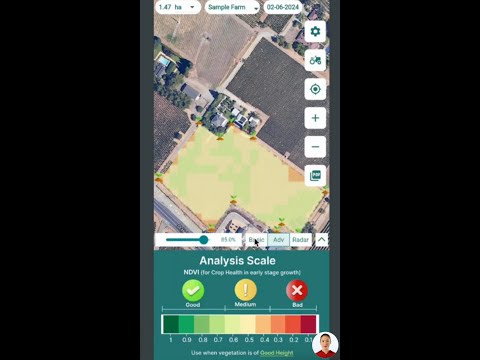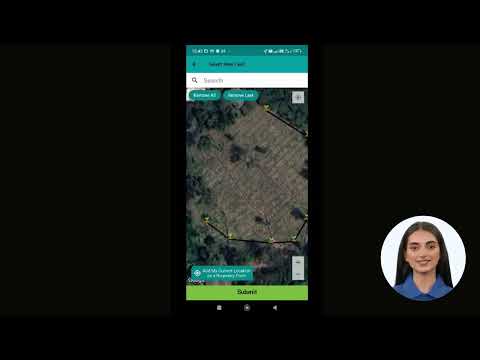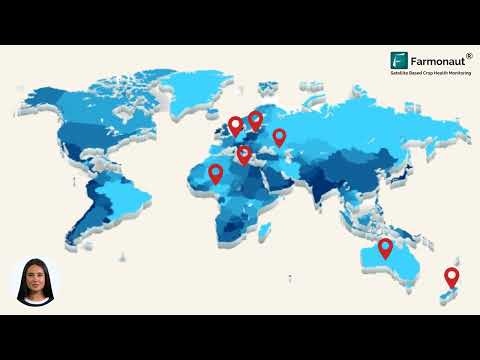Spring Wildfire Season in Virginia: Essential Tips for Fire Prevention and Safety in Rockingham County
“Virginia’s 4 pm burn law restricts open-air burning, reducing wildfire risks during the spring season’s peak danger hours.”
As we enter the spring wildfire season in Virginia, it’s crucial for us to stay vigilant and take necessary precautions to prevent the spread of wildfires. In this comprehensive guide, we’ll explore the essential tips for fire prevention and safety, with a special focus on Rockingham County. Our goal is to equip you with the knowledge and tools needed to protect our beautiful landscapes and communities from the threat of wildfires.
Understanding the Spring Wildfire Season in Virginia
The spring wildfire season in Virginia officially began on February 15th, and it’s a time when we must be particularly cautious. Despite improvements in moisture levels compared to previous years, the risk of wildfires remains significant. Let’s delve into why this season is so critical and what factors contribute to increased fire danger.
Factors Contributing to Wildfire Risk
- Dry grass and vegetation: As snow melts and temperatures rise, grass and other vegetation can quickly dry out, becoming prime fuel for wildfires.
- Low humidity: Spring often brings periods of low humidity, which can accelerate the drying process of potential fuels.
- High winds: Gusty spring winds can rapidly spread fires and make containment challenging.
- Warm temperatures: Rising temperatures contribute to drying out vegetation and creating favorable conditions for fire ignition and spread.
These factors combined can create a perfect storm for wildfire development and propagation. That’s why it’s essential for us to remain aware and take proactive measures to prevent fires from starting in the first place.
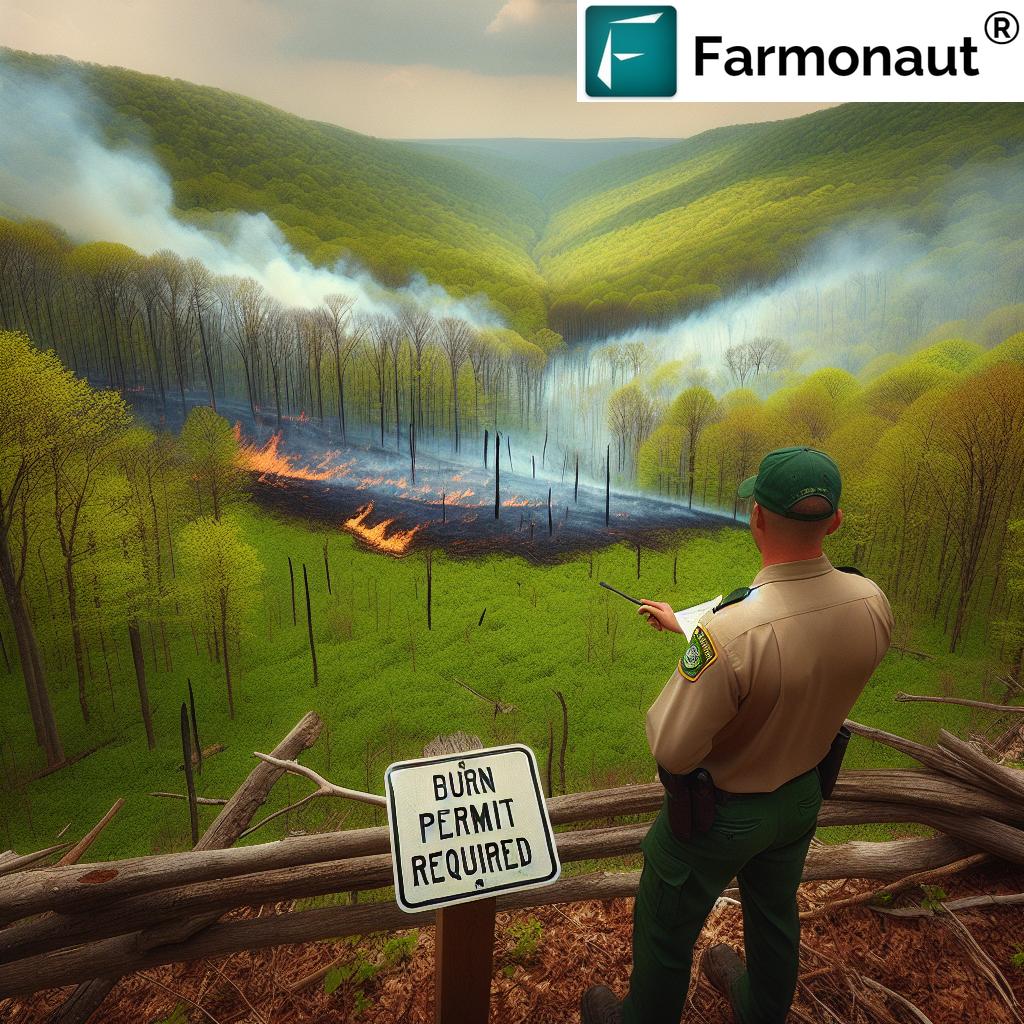
The 4 PM Burn Law: A Crucial Fire Prevention Measure
One of the most important regulations we have in place to combat wildfires is Virginia’s 4 PM Burn Law. This law is a critical component of our wildfire prevention strategy, and understanding its details is essential for all residents.
Key Points of the 4 PM Burn Law:
- The law is in effect from February 15th to April 30th each year.
- It prohibits open-air burning before 4 PM within 300 feet of dry grass or wooded areas.
- After 4 PM, burning is permitted until midnight, provided the fire is contained and attended.
- The law aims to reduce fire risks during the day when conditions are typically driest and most conducive to fire spread.
By adhering to this law, we significantly reduce the risk of wildfires during the most dangerous hours of the day. It’s a simple yet effective measure that has proven invaluable in our fire prevention efforts.
Rockingham County Burn Permits: A Local Approach to Fire Safety
“Rockingham County requires burn permits for all outdoor fires, emphasizing strict fire safety measures in the region.”
In Rockingham County, we take fire safety a step further by requiring burn permits for all outdoor fires. This local regulation is designed to ensure that residents are aware of the risks and responsibilities associated with outdoor burning.
How to Obtain a Burn Permit in Rockingham County:
- Call the Burn Permit line at 540-564-8297.
- Call between 8 AM and 4:30 PM, Monday through Friday.
- Provide necessary information about your planned burn.
- Follow all instructions and guidelines provided by the permit issuer.
Obtaining a burn permit not only ensures compliance with local regulations but also provides an opportunity to receive valuable safety information and guidance from fire prevention experts.
Creating Effective Green Spaces: A Natural Barrier Against Wildfires
One of the most effective ways we can protect our properties from wildfires is by creating and maintaining green spaces around our residences. These areas act as natural firebreaks and can significantly reduce the risk of fire spread.
Tips for Creating Effective Green Spaces:
- Maintain a buffer zone: Create a 30-foot buffer zone around your home free of dry vegetation and debris.
- Choose fire-resistant plants: Opt for plants with high moisture content and low oil or resin content.
- Regular maintenance: Keep grass short and well-watered, especially during dry periods.
- Strategic landscaping: Use hardscaping elements like stone walls or gravel paths to create natural firebreaks.
By implementing these strategies, we can create a more fire-resistant environment around our homes, significantly reducing the risk of wildfire damage.
Preventing Wildfire Spread: Essential Tips for Homeowners
Beyond creating green spaces, there are several other crucial steps we can take to prevent the spread of wildfires and protect our homes and communities.
Key Prevention Measures:
- Clear debris: Regularly remove leaves, twigs, and other flammable materials from your roof, gutters, and around your home.
- Create defensible space: Maintain a clear area of at least 100 feet around your home, free from flammable vegetation.
- Use fire-resistant materials: When building or renovating, choose fire-resistant roofing, siding, and other construction materials.
- Proper storage: Store firewood and other flammable materials at least 30 feet away from your home and other structures.
- Emergency preparedness: Develop and practice an emergency evacuation plan with your family.
By implementing these measures, we can significantly reduce the risk of wildfire spread and protect our homes and communities.
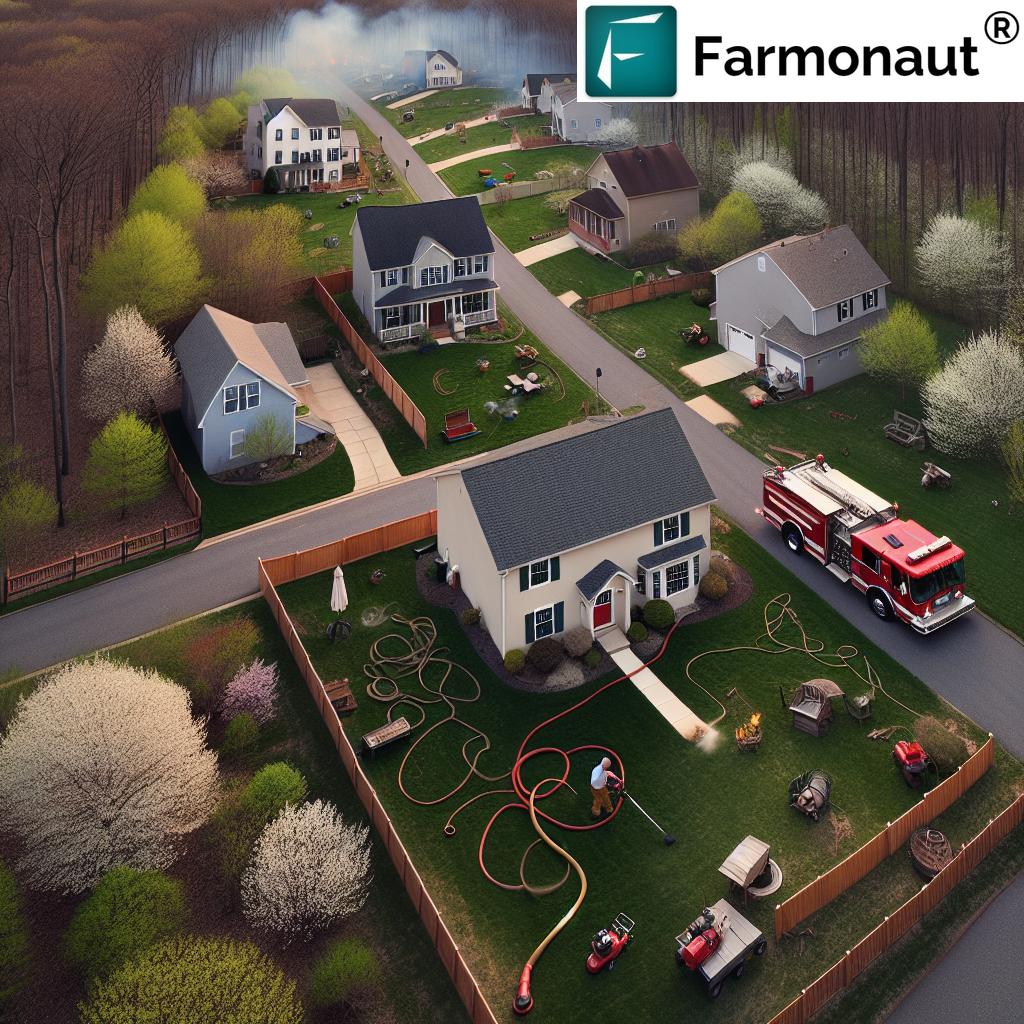
Forestry Department’s Wildfire Preparedness: Learning from Past Seasons
The Virginia Department of Forestry has been working diligently to enhance our wildfire preparedness based on lessons learned from previous fire seasons. Their efforts are crucial in our collective fight against wildfires.
Key Improvements and Strategies:
- Enhanced monitoring systems: Implementing advanced technology to detect and track potential fire hazards.
- Improved resource allocation: Strategically positioning firefighting resources based on historical data and current conditions.
- Public education initiatives: Expanding outreach programs to educate communities about fire prevention and safety.
- Interagency cooperation: Strengthening partnerships with local, state, and federal agencies for more effective wildfire response.
These improvements demonstrate the Department’s commitment to protecting our forests and communities from the threat of wildfires.
Understanding Wildfire Risk Factors: Knowledge is Power
To effectively prevent wildfires, it’s crucial for us to understand the various risk factors that contribute to their occurrence and spread. By recognizing these factors, we can take more informed and targeted prevention measures.
Key Wildfire Risk Factors:
- Weather conditions: High temperatures, low humidity, and strong winds create ideal conditions for fire spread.
- Fuel availability: The presence of dry vegetation, dead trees, and other combustible materials increases fire risk.
- Topography: Steep slopes and canyons can accelerate fire spread and make containment more challenging.
- Human activity: Careless burning, campfires, and equipment use are common causes of wildfires.
- Lightning strikes: Natural ignition sources, particularly during dry thunderstorms, can start wildfires.
By being aware of these risk factors, we can better assess the fire danger in our area and take appropriate precautions.
Spring Fire Safety Tips: Protecting Our Communities
As we navigate the spring wildfire season, there are several important safety tips we should all keep in mind to protect ourselves, our properties, and our communities.
Essential Spring Fire Safety Tips:
- Stay informed: Regularly check local weather forecasts and fire danger ratings.
- Proper disposal: Safely dispose of cigarettes, matches, and other potential ignition sources.
- Equipment maintenance: Keep lawn mowers, chainsaws, and other outdoor equipment well-maintained to prevent sparks.
- Campfire safety: If camping, fully extinguish campfires and never leave them unattended.
- Report suspicious activity: If you see signs of a potential wildfire, report it immediately to local authorities.
By following these tips and remaining vigilant, we can significantly reduce the risk of wildfires in our communities.
| Prevention Measure | Importance | Completion Status |
|---|---|---|
| Obtain burn permit | High | |
| Follow 4 pm burn law | High | |
| Create green spaces around residence | Medium | |
| Clear debris from home perimeter | High | |
| Check local weather conditions | Medium | |
| Understand Virginia burn laws | High | |
| Prepare emergency evacuation plan | High |
Open-Air Burning Regulations: Staying Compliant and Safe
Understanding and adhering to open-air burning regulations is crucial for preventing wildfires and ensuring community safety. Let’s review some key regulations and best practices for open-air burning in Virginia and Rockingham County.
Open-Air Burning Guidelines:
- Permitting: Always obtain the necessary burn permits before conducting any open-air burning.
- Timing: Adhere to the 4 PM burn law during the designated spring wildfire season.
- Distance: Maintain a safe distance from structures, trees, and other combustible materials.
- Supervision: Never leave a fire unattended and have appropriate fire suppression tools on hand.
- Weather awareness: Check weather conditions and avoid burning on windy or extremely dry days.
By following these guidelines, we can conduct necessary burning activities safely and responsibly, minimizing the risk of accidental wildfires.
Community Involvement in Wildfire Prevention
Preventing wildfires is a community effort, and there are many ways we can work together to protect our environment and each other. Let’s explore some ways to get involved in wildfire prevention initiatives.
Ways to Get Involved:
- Join local fire safety committees: Participate in community-based fire prevention groups.
- Attend educational workshops: Learn more about fire safety and prevention techniques.
- Volunteer for cleanup efforts: Help clear public areas of potential fire hazards.
- Spread awareness: Share fire safety information with neighbors and on social media.
- Support local fire departments: Donate or volunteer to support their prevention and response efforts.
By actively participating in these initiatives, we can create a more fire-resilient community and protect our beautiful Virginia landscapes.
Leveraging Technology for Wildfire Prevention and Management
In today’s digital age, technology plays a crucial role in wildfire prevention and management. Various tools and platforms are available to help us monitor, predict, and respond to wildfire threats more effectively.
One such innovative platform is Farmonaut, which offers advanced satellite-based monitoring solutions that can be applied to wildfire prevention and management. While primarily focused on agricultural applications, Farmonaut’s technology can provide valuable insights for forest and land management.
How Technology Aids in Wildfire Prevention:
- Satellite monitoring: Platforms like Farmonaut use satellite imagery to detect changes in vegetation health, which can indicate increased fire risk.
- AI-powered predictive models: Advanced algorithms can analyze various data points to predict potential fire hotspots.
- Real-time weather data: Access to up-to-date weather information helps in assessing fire risk and planning prevention activities.
- Mobile apps: Smartphone applications can provide real-time alerts and safety information to residents.
By embracing these technological advancements, we can enhance our wildfire prevention efforts and better protect our communities.
The Role of Sustainable Land Management in Wildfire Prevention
Sustainable land management practices play a significant role in reducing wildfire risks. By adopting these practices, we can create landscapes that are more resilient to fire while also promoting overall ecological health.
Sustainable Land Management Strategies:
- Prescribed burning: Controlled burns can reduce fuel loads and promote healthy ecosystem regeneration.
- Forest thinning: Selective removal of trees and understory vegetation can reduce fire intensity and spread.
- Native plant restoration: Planting fire-resistant native species can create natural firebreaks.
- Rotational grazing: Strategic grazing can help manage vegetation and reduce fire fuel loads.
- Soil conservation: Healthy soils retain moisture better, reducing the risk of rapid fire spread.
Implementing these strategies not only helps prevent wildfires but also contributes to the overall health and sustainability of our natural environments.
Preparing for Wildfire Emergencies: A Community Approach
While prevention is our primary focus, it’s also crucial to be prepared for wildfire emergencies. Community-wide preparedness can make a significant difference in mitigating the impact of wildfires if they do occur.
Community Preparedness Strategies:
- Develop community evacuation plans: Work with local authorities to create and communicate clear evacuation routes and procedures.
- Establish communication networks: Set up systems for rapid dissemination of emergency information within the community.
- Create defensible spaces: Encourage all residents to maintain fire-resistant zones around their properties.
- Conduct regular drills: Practice emergency procedures to ensure everyone knows what to do in case of a wildfire.
- Support vulnerable populations: Identify and assist community members who may need extra help during evacuations.
By working together and staying prepared, we can enhance our community’s resilience to wildfire threats.
Conclusion: A Collective Effort for a Fire-Safe Virginia
As we navigate the spring wildfire season in Virginia, particularly in Rockingham County, it’s clear that preventing wildfires and ensuring community safety is a collective responsibility. By understanding the risks, following regulations, implementing prevention measures, and staying prepared, we can significantly reduce the threat of wildfires to our beautiful landscapes and communities.
Remember, every action counts – from obtaining the necessary burn permits and following the 4 PM burn law to creating effective green spaces and staying informed about local conditions. Let’s work together to keep Virginia safe and green, protecting our natural resources for generations to come.
Stay vigilant, stay informed, and stay safe this wildfire season!
FAQs About Spring Wildfire Season in Virginia
- Q: When does the spring wildfire season start in Virginia?
A: The spring wildfire season in Virginia officially begins on February 15th and extends through April 30th. - Q: What is the 4 PM burn law?
A: The 4 PM burn law prohibits open-air burning before 4 PM within 300 feet of dry grass or wooded areas during the spring wildfire season. - Q: How do I obtain a burn permit in Rockingham County?
A: Call the Burn Permit line at 540-564-8297 between 8 AM and 4:30 PM, Monday through Friday, to obtain a burn permit. - Q: What are some key factors that contribute to wildfire risk?
A: Key factors include dry vegetation, low humidity, high winds, warm temperatures, and human activities. - Q: How can I create an effective green space around my home?
A: Maintain a 30-foot buffer zone free of dry vegetation, choose fire-resistant plants, keep grass short and well-watered, and use strategic landscaping. - Q: What should I do if I spot a wildfire?
A: Immediately report it to local authorities and follow any evacuation orders if issued. - Q: Are there any technologies that can help with wildfire prevention?
A: Yes, technologies like satellite monitoring, AI-powered predictive models, and real-time weather data analysis can aid in wildfire prevention and management. - Q: How often should I clear debris from around my home?
A: It’s recommended to clear debris regularly, especially before and during the spring wildfire season. - Q: What are some sustainable land management practices that help prevent wildfires?
A: Practices include prescribed burning, forest thinning, native plant restoration, rotational grazing, and soil conservation. - Q: How can I get involved in community wildfire prevention efforts?
A: You can join local fire safety committees, attend educational workshops, volunteer for cleanup efforts, spread awareness, and support local fire departments.
Earn With Farmonaut: Affiliate Program
Earn 20% recurring commission with Farmonaut’s affiliate program by sharing your promo code and helping farmers save 10%. Onboard 10 Elite farmers monthly to earn a minimum of $148,000 annually—start now and grow your income!
For more information on satellite monitoring and weather data analysis, check out Farmonaut’s API and API Developer Docs.
